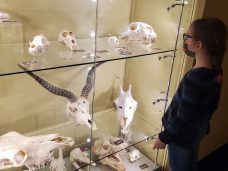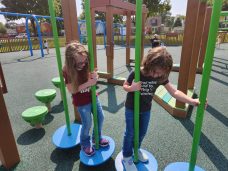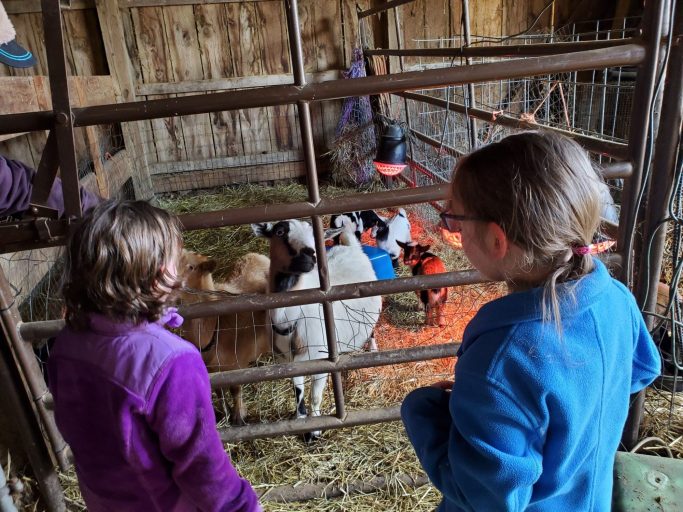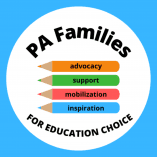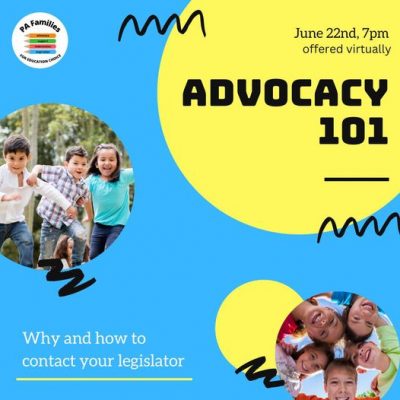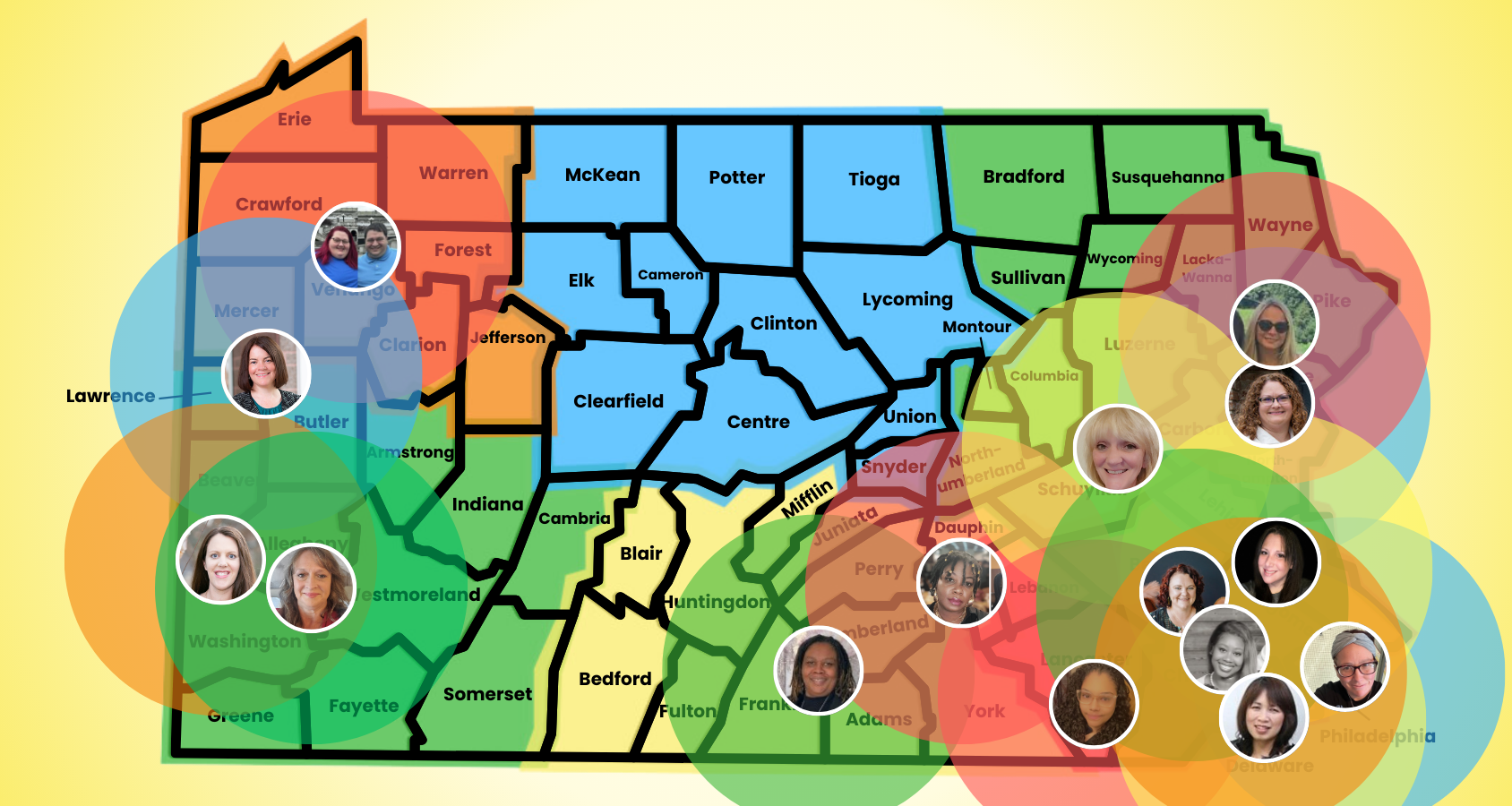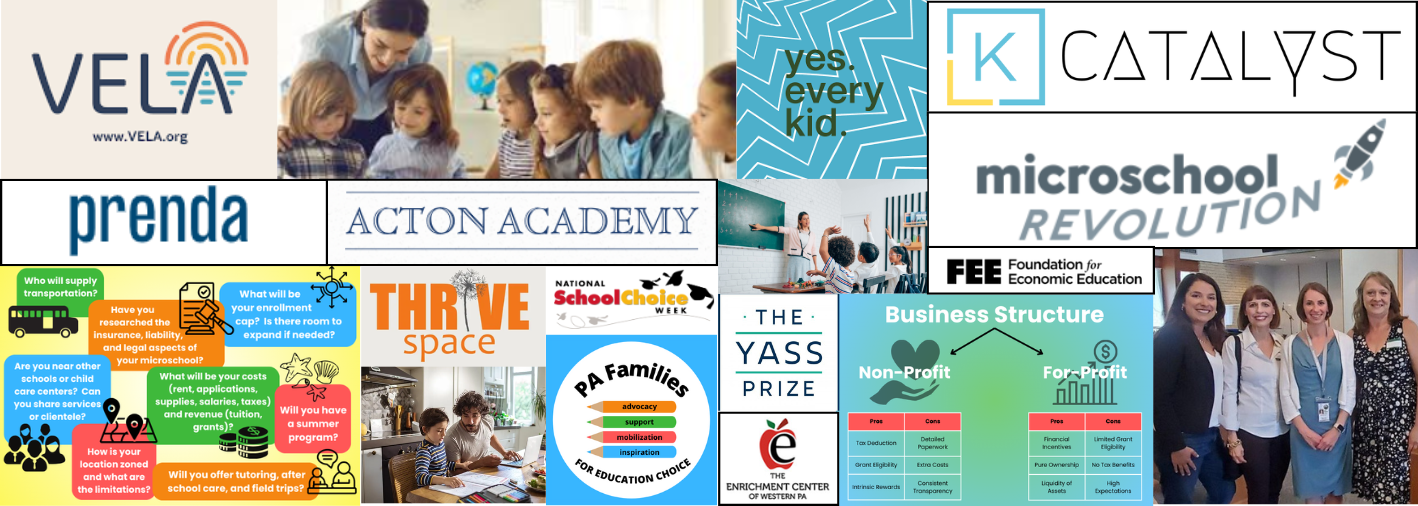FAPE, Special Needs and Homeschooling
A Family Story
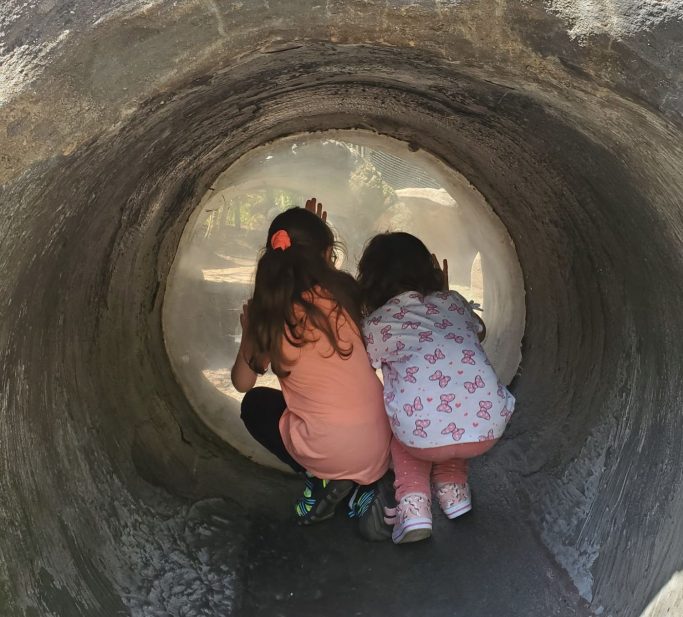

Our family’s journey has never been a straight road. Soon after our honeymoon, Dan and I found out we were expecting our now 7-year-old, BR. She was a miracle baby that made her entrance into the world a bit early. BR is smart, beautiful, and creative but she has some health and developmental challenges that cause her to interact with the world a bit differently, and she received early intervention services as an infant.
When she was approaching age 3, her primary diagnosis was a speech disorder called childhood apraxia of speech; she communicated mostly with American Sign Language. We found a local preschool for kids that were deaf/HOH (hard of hearing), so we set up a tour and met with the director and teachers. As soon as we walked in the door, BR’s eyes lit up and she instantly found belonging – it was the first time outside of our home that she had seen people communicating with ASL. We made our wishes known to the regional school system (in PA we get services through the IU or intermediate unit), and at first, we were denied. The IU recommended a speech class; two days a week, for an hour and a half. The teachers of the class had been told about BR and were reportedly interested in learning a few signs, but by this time, BR had a significant ASL vocabulary and was stringing signs together to make phrases and full sentences. The proposal was simply not okay with us. It took some time and a lot of phone calls to advocate for our daughter, and we had to remind people that a Free Appropriate Public Education was her right, regardless of diagnosis.
One day the phone rang and the person on the other end said that our daughter had been accepted to the preschool. BR spent 2 ½ years at the most amazing school we could have asked for; a small class 5 mornings a week, and two amazing teachers, along with a teacher’s aide who was deaf and ASL was her first language. The teachers used a combination of ASL and spoken English. The kids in the class had a variety of needs, and each child was embraced exactly as they were and encouraged to grow in whatever ways were appropriate for them. In addition to being in a language rich environment that she could access, BR received speech, OT, and PT while she was at school. Most importantly, BR learned how to communicate with us, and we learned how to communicate with her.
I will forever be grateful for the foundation that was built in this special-needs preschool.
Enter 2020. Dun, dun, dun….
In the Spring of 2020, BR was thriving in her school environment. We had been working with the local elementary school to write her lengthy IEP for kindergarten, and we were very uncomfortable. The teachers and therapist were wonderful, and each person we had met with was doing an excellent job; yet, there simply were no provisions for some of the challenges BR was facing. We were concerned for her physical safety in the school building and no one seemed to be able to tell us how they could mitigate our concerns. Amazing therapists and services were available but they didn’t align with our daughter’s needs. I had spent many sleepless nights wondering what we were going to do – then covid came. Because BR’s medical needs are fairly unique, we weren’t sure what her level of risk might be. The preschool moved online and still managed to do a great job. The kids had a few live check ins with lessons uploaded, supplies were dropped off at our home, and we could do things on our own schedule and in our own way. Despite so much uncertainty in the world, I was certain that BR was getting everything she needed. As an added bonus, BR’s younger sister NH began to take an interest as well. NH was two years old and started joining in as we watched videos and did activities with her big sister.
It had been planned that BR would start public kindergarten in the fall of 2021. The part of my brain labeled “mom” kept wondering how I was going to do it. The IEP wasn’t going to keep her safe, and the schools were in chaos. Our family had lost loved ones to COVID and was doing everything possible to keep it out of our house and away from the kids. We didn’t even know who would pick her up from school, because her dad and I both worked. There were no afterschool programs available for her school. It seemed as though it was impossible, and I knew we had to think outside of the box.
Choices and Options
It wasn’t until we had all these factors working against us that we started to really think about our options. It was always just assumed the kids would go to public school once they were old enough for kindergarten. We talked to BR’s teachers, and we were all in agreement that holding her back an extra year wasn’t the solution because she was completely ready for kindergarten. I researched private schools in our area, but none would take her because of the health and safety concerns – even the schools for kids with special needs were not equipped to meet her needs (and we couldn’t afford the schools even if they decided to accommodate her). I thought about all the kids in virtual kindergarten, and I knew in my heart there was no way my daughter was going to be able to do that. The local school offered synchronous learning during regular school hours, but my bouncy, creative little girl was not going to be a good fit for that kind of learning environment.
At first, I dismissed the remaining idea – homeschool. My husband and I both worked full time just to keep us going. When I thought about homeschooling, I envisioned a matronly homemaker wearing a long skirt surrounded by 5+ kids with all of the lessons being taught by mom, and I knew that wouldn’t work for us – it would not work for me; yet, I knew in my heart that there had to be more than this stereotype, so I started to research and learned about different styles of homeschool. BR already had outpatient therapies. She already liked ABC mouse and had an interest in learning. We already had a childcare arrangement that worked for us. Perhaps the most important and liberating thing I learned was that for kindergarten, it was commonly accepted that we would only need about 30 minutes per day, which I knew I could do. I hoped that, in the next year, COVID would get under control and some of BR’s health complications would resolve; but somehow, a piece of me knew it was not going to be that simple.
And so Kindergarten begins…
We started kindergarten by doing something I never thought we would do… I bought a Chromebook for my 5-year-old! BR got access to an online platform that would provide most of her lessons. We worked on beginning reading together, and she was provided with her outpatient therapies electronically. We set her up to be as independent as possible, and found that she loved doing schoolwork on the computer – it grabbed her attention and kept her motivated. We learned that BR had a real gift for science, and she loved the time we spent together snuggling while reading. We also learned to be gentle and patient with each other; how to be flexible, using the good days to our advantage and not worry so much about the not so good days. We all learned a LOT about how much a child learns constantly. We spent time cooking and baking, singing songs, and going for walks – to suck the learning out of every moment.
Ever since
By the time kindergarten was over, I knew I would never want to go back. We still use online tools frequently because BR loves them and learns a lot from videos, but we’ve moved away from the all-in-one programs and curriculums and have expanded our resources exponentially. This year (what would be 2nd grade in a public school) we are focused on providing more structured time with other kids. We started off by doing a science fair project on oxidation and presenting it virtually in a group of local homeschool students. BR participates in a monthly research group that allows her to pick a topic to explore and then present what she has learned. She also is taking two classes at a homeschool co-op that shares our family’s values and has been accepting of all her “quirks”. We call our homeschool THRIVE (Together Helping Recreate an Individual Vibrant Education), because I get to watch my child thrive and beat the odds every day.
A Note About NH
NH is now 4. This year is her second year enrolled in a wonderful private preschool. Last year she went three mornings a week, and this year she goes for four. She still joins us for story time, science experiments, library trips, and all kinds of informal learning. She also has insisted she wanted to have her own “school” on the computer like her sister. Nearly every morning before she goes to her preschool program, she can be found at the kitchen table working on early math and reading skills on my laptop. In our family, we consider her a hybrid learner; while she attends the preschool program outside of the home, she definitely homeschools too. We have not yet decided what type of schooling she will do next year, but we know that she will definitely be ready for kindergarten. She is a very different child with different strength and different needs. If we homeschool her, we will have to adapt to her learning styles, and I already have some ideas.
Pros and Cons
The thing I love most about homeschooling is the amount of flexibility we have to meet the needs of our whole family. BR still does some life skills work that would probably be considered pre-K level but she also does science well beyond the expectations for a child her age. Structured schooling is done when it’s convenient for us (that happens to be mostly mornings for us because I work second shift). We “do school” in the morning before lunch, and after lunch the kids go to the sitter’s house while I go to work. Weekends we have more time for trips, the library, and other miscellaneous learning adventures. If someone is sick or we’re just having a rough day, I can change up the plan; maybe we just pick a topic to explore for the day or maybe we skip school altogether to focus on other priorities – all I need to think about is my children and how do I help them grow into the young people they are meant to be.
It was this flexibility that I firmly believe saved our family a year ago. My husband had a sudden and drastic health crisis, and he was away from home for two months. When he did come home, he couldn’t do all the things he used to. It was chaotic going back and forth to the hospital and the rehab facility, meeting with all of his doctors, advocating for the care he needed, etc., and there was a month that we did little to no formal school work; the academics we were able to do were built into the daily necessities of life. BR’s favorite task was going with me once a week to pick up produce from our crop share; she would read the list of vegetables that we were getting, sort them, and read off the instructions for how to store them properly. She did it each week with minimal assistance, and then she started reading recipes and taking more of an interest in cooking and how we use healthy foods. It wasn’t a structured lesson that we found in a curriculum, but we built in reading, math, sorting, problem solving, following directions, and so much more.
There were a few downsides we had to work through. The big one for most working families (or now we are a family with a disabled parent) is childcare, but we are lucky to have some support in this area. Our kids still go to the same family friend that has cared for them since BR was a baby. We also have other people that were willing to step in and help fill the need. Another downside where we live (this is not true everywhere) is that we lost access to school-based support for special needs, but have been able to successfully navigate, using insurance to find doctors and therapists as needed. Lastly, I think it took us a while to find “our people” – there were lots of homeschool groups in our area but not many that shared our values. Now, we drive an hour to co-op once a week, but it’s so very worth it!
It seems that anytime homeschool comes up, people ask about socialization. I have to say that is something we’ve had to be mindful of, but not something we’ve found challenging. The kids are at the sitter’s house with her family every day. We are part of a faith community. The kids are occasionally welcomed to join in social events at my workplace, where they know they are loved and considered. BR has the friends in her adaptive ballet class and the kids at the co-op. We make sure they get time with grandparents, aunts and uncles, cousins, godparents, and family friends. When I step back to think about it, they have a booming social calendar full of meaningful interaction with a wide variety of people of all ages and backgrounds not in spite of homeschooling but because of it.
Favorite Resources
We love the curriculum choices that work for us. I fundamentally believe they will be different for every family, as I know how different they are for just my 2 kids. Homeschool parents love to talk about curriculum, and I’m no exception. I research and see what other people are doing, buy things, and (admittedly) get a little obsessed – those aren’t my biggest or favorite resources, though. The best resources for us have been the people in our lives. The people that will provide childcare, share some of their own knowledge, and who will be an audience over zoom for a puppet show all about the last lesson. I am so grateful for those human resources!
After that, my favorites are the public library, our puppet theatre, PBS kids, homeschool groups on social media (did I just list more people?), and BST curriculum groups. Now that we found a co-op that “feels like us”, I would add that.
Words of encouragement
If you have thought about homeschooling but haven’t made the leap – know that you can do it. It is a very different mindset than any other type of schooling. It takes a little bit to give up the idea that school/learning/your student should look a particular way but once you do, everything else falls into place. I can meet my daughters exactly where they are, forgetting about the kid next door or the mythical average student in their age or grade. I can teach them exactly what they need to know in a way that they can understand and learn from it.
Victoria and Dan have been married for eight years. They love spending time with their two daughters, their ten-year-old goddaughter, and their family dog, Eli. The family also spends time with extended family and amazing friends. Dan and Victoria hope to add to their family one day through foster care and/or adoption.
Professionally, Victoria currently works as a counselor at a homeless shelter where she is responsible for a 6–12 month program for women and children. She loves working with each of the families and seeing the amazing changes that can take place when a woman/family find a safe and supportive place.
